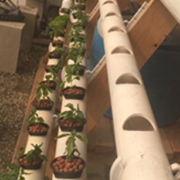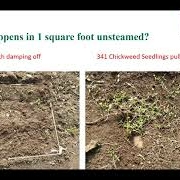Helping a Neighbor—and helping NCAT, too
 Print This Post
Print This Post
By Andrew Coggins, NCAT Rocky Mountain West Regional Director
I’ve spent most of my life working in large-scale crop production. Through this work, I’ve developed a passion for growing food and feeding people, which feels even more important right now, during the COVID-19 pandemic. Part of being able to do so is understanding the specific climate you’re working with and adjusting your approach to support that climate. Here in Butte, Montana, there are unique challenges for fruit and vegetable production, a short growing season that results from a cold, high-altitude climate. I’ve learned, though, that we can address these challenges, in part, by using season-extension tools such as high tunnels. Since 2018, we have been steadily replacing the original hoop houses on NCAT’s Small-Scale Intensive Farming Training (SIFT) demonstration farm with new high tunnels. Recently, an opportunity to add another came along, and it was too great to resist!
Opportunity Calls
In February 2020, I received a call from Huey Long in Deer Lodge, Montana, asking if NCAT would like half of an 80-foot-long, 26-foot-wide high tunnel, as he needed to reduce his production area to something more manageable.
I originally met Huey back in November 2017 when the SIFT was preparing to apply for an NRCS EQIP High Tunnel grant. As part of the process, the local NRCS officer in nearby Whitehall suggested that I go and visit two high tunnel sites in the area to get an idea of designs and how the program worked. One was Dave McCarson at Alpine Organic Farm near Three Forks, and the second was Huey Long, a retired NRCS soil scientist.
Fast forward back to March 2020, when SIFT farm manager John Wallace and I took a trip down to see the high tunnel in person, practicing social distancing as COVID-19 restrictions begin to take effect. The upshot was that if we could dismantle and remove the west-facing 36 feet (four feet had to be sacrificed because of the hoops) and leave the remaining 40 feet, then NCAT could have the high tunnel structure for our SIFT farm.

Huey’s FieldPro high tunnel. Photo: NCAT

Wind-bracing bars refitted. Photo: NCAT
Deconstructing a High Tunnel
The operation took two full days in April, and would have taken longer if we had not had the experience of recently constructing two of our own at the SIFT farm. Working with my son, Robert, we first removed the sheeting from the west end wall to give us better access. Next, the main sheet was cut between the last hoop of the section being retained and the first hoop of the section being removed (see photos) and then all the wiggle wire that holds the sheet to the frame was removed. If you’re doing a similar project yourself, it’s important to note which way the wind is blowing (from the southeast, in this case) and remove all wiggle wire from the plastic sheet on the south side and leave some on the north side. This allows you to remove the sheet from the structure with minimum effort and keep it from disappearing into the distance because it is still affixed to the northern side.
Next, we removed the hoops, working away from the structure that was to remain. Keeping the purlins, base posts, timber board, and wind bracing in place until the last hoop was removed was a safe way to dismantle the structure. If you notice the timestamps in the photos, you realize that a lot of the structure was dismantled very quickly! The final task on the first day was to remove the end hoop from the door frame, the rails that held the wiggle wire, and the timber boards, and then refit the wind bracing bars onto the structure that was remaining on site.
I returned to the site on my own a week later to finish dismantling the remaining structure (above right) and transport everything back to NCAT. This took the full day, as the devil is in the detail, or in this case the ground posts (which all had to be dug out by hand), and the remaining timber.
The high tunnel will now be reconstructed at NCAT in 2021, possibly over part of the YMCA area on the SIFT farm, and it will be a welcome addition. A big thank you to Huey Long and his generous donation to NCAT. I hope your summer is going well, Huey, and that you are enjoying your more manageable high tunnel!
Related Resources
SIFT 2019: Continuing Lessons from a Small-Scale Urban Intensive Farm
SIFT 2018: Lessons from a Small-Scale Urban Intensive Farm
For more information, contact Andrew Coggins directly at andrewc@ncat.org.











 USDA NRCS Flickr
USDA NRCS Flickr